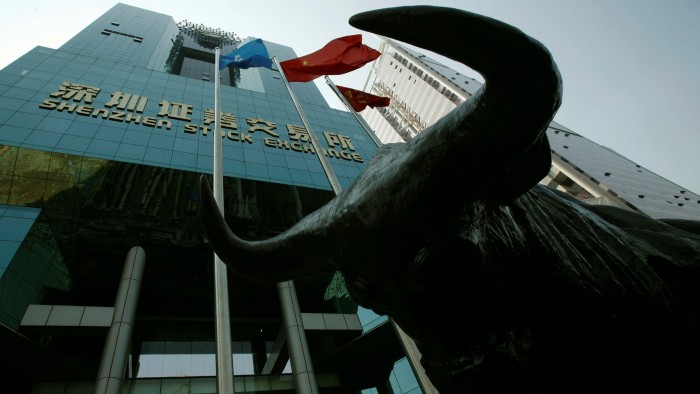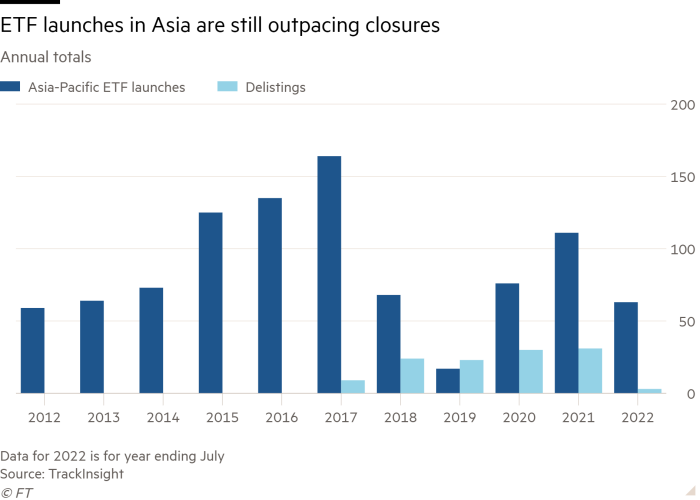Robust growth in Asia ETFs looks set to continue

Simply sign up to the Exchange traded funds myFT Digest -- delivered directly to your inbox.
Latest news on ETFs
Visit our ETF Hub to find out more and to explore our in-depth data and comparison tools
Robust growth in Asia’s exchange traded fund market looks set to continue with most managers surveyed indicating that they plan to grow or enter the ETF market, a new report reveals.
Research from Cerulli Associates, a consultancy, found more than 80 per cent of managers it surveyed in China, nearly 70 per cent in South Korea, and 60 per cent in India stated they were in the process of developing ETF products.
The enthusiasm from asset managers follows strong growth in the region. Net inflows into ETFs listed in Asia ex-Japan rose to a record $91.8bn in 2021, from just $11.5bn in 2020, when markets were hit by the pandemic. They were about 50 per cent higher than the $58.9bn in inflows achieved in 2019.
The strong flows helped ETF assets under management in the region rise from $322bn at the end of 2020 to $422bn in 2021.
“ETF growth in Asia has been stellar,” said Amin Rajan, chief executive of Create Research, a consultancy.
Thematic ETFs led inflows in the region, Cerulli noted, with technology, internet, batteries and metaverse products among the launches in China, South Korea and Taiwan.
The findings were based on 79 research interviews and surveys of asset managers from China, Hong Kong, India, Korea, Singapore, and Taiwan.
But Rajan wondered if growth might be more frothy than it appeared. “Asia has been slow to develop a buy-and-hold culture,” he said.
New product launches, particularly of thematic products, were often hyped, he said, adding that in contrast to Europe, where the ETF market is dominated by institutional clients, Asian markets were very retail driven and that many self-directed investors in the region had a speculative attitude to investment that was “akin to gambling”.
But Antoine de Saint Vaulry, head of ETF sales and business development for the Asia-Pacific region at Citi, said there had been distinct changes in the region. “What’s changed is the attitude of institutional investors. They used to look at beta [index tracking] products as a threat, but now they are beginning to look at them as tools for building portfolios.”
Jackie Choy, director of ETF research in Asia for Morningstar, said there were clear signs of stability in the market. This was evident even in China, which has had a string of launches of niche ETFs focused on the hottest themes and industries, making them increasingly popular among self-directed investors.

China’s ETF market is still growing, he said. “If you look at the number of ETFs in the China market, it has been increasing and there actually hasn’t been a lot of closures,” said Choy.
Asia remains a small part of the global ETF universe, which totalled $8.9tn in assets under management at the end of June, but Saint Vaulry said its trajectory was more assured. “Compared to the rest of the world, growth in the Asian ETF market has been more sustained, although from a smaller base.”

Click here to visit the ETF Hub
Comments